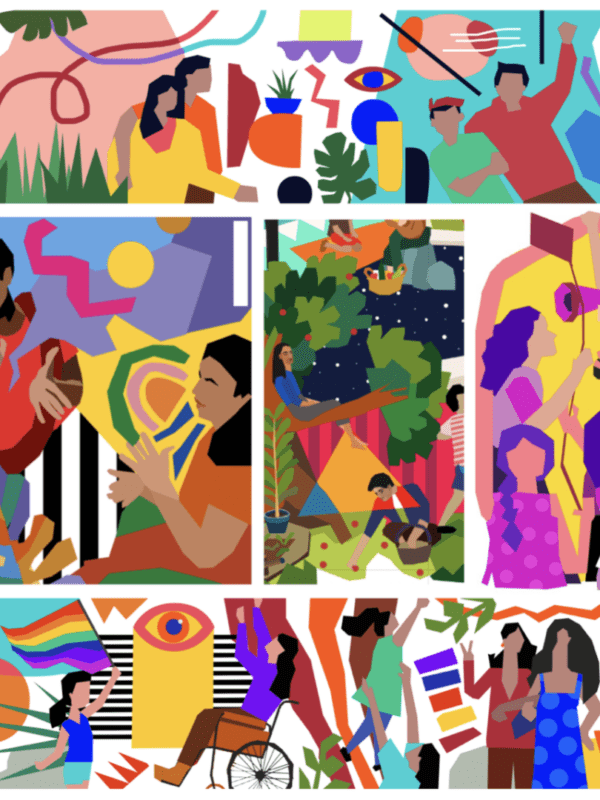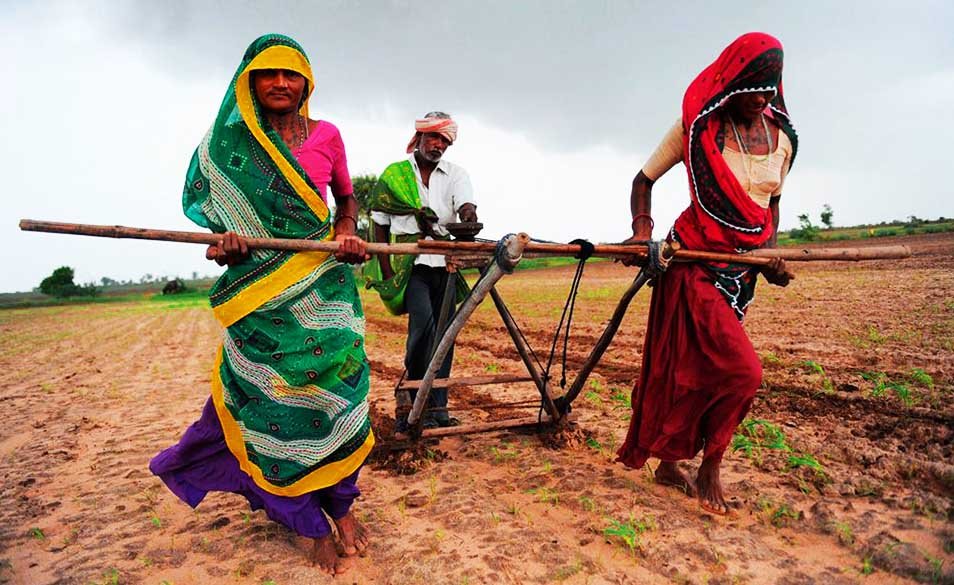Roshni Singh was a creative child and as she grew up, she learnt the art…
Read More →

Roshni Singh was a creative child and as she grew up, she learnt the art…
Read More →
While Aarti Gill was studying in IIT Roorkee, she discussed her business idea with her…
Read More →
Pallavi Singh was in the 3rd year of engineering when she realized that Electronics and…
Read More →
Mochis or cobblers have traditionally belonged to the schedule caste and other backward classes spread…
Read More →
Known for her unusual sense of styling, outspoken attitude, over-the-edge creativity, Sapna Bhavnani is everything…
Read More →
“In April 2017, Neeta read an article in the Guardian about a family in Dhaka,…
Read More →
Indian Parents don’t think of dance as a career option for children. So when Nidhi…
Read More →
The Aravani Art Project was in Delhi to paint a few vibrant murals on the…
Read More →
I was in the third year of my college when our product was ready. We…
Read More →
“No one should be left behind. It is a loss on our part as a…
Read More →
Roshni Singh was a creative child and as she grew up, she learnt the art…
Read More →
While Aarti Gill was studying in IIT Roorkee, she discussed her business idea with her…
Read More →
Pallavi Singh was in the 3rd year of engineering when she realized that Electronics and…
Read More →
Mochis or cobblers have traditionally belonged to the schedule caste and other backward classes spread…
Read More →
Known for her unusual sense of styling, outspoken attitude, over-the-edge creativity, Sapna Bhavnani is everything…
Read More →
“In April 2017, Neeta read an article in the Guardian about a family in Dhaka,…
Read More →
Indian Parents don’t think of dance as a career option for children. So when Nidhi…
Read More →
The Aravani Art Project was in Delhi to paint a few vibrant murals on the…
Read More →
I was in the third year of my college when our product was ready. We…
Read More →
“No one should be left behind. It is a loss on our part as a…
Read More →
Roshni Singh was a creative child and as she grew up, she learnt the art…
Read More →
While Aarti Gill was studying in IIT Roorkee, she discussed her business idea with her…
Read More →
Pallavi Singh was in the 3rd year of engineering when she realized that Electronics and…
Read More →
Mochis or cobblers have traditionally belonged to the schedule caste and other backward classes spread…
Read More →
Known for her unusual sense of styling, outspoken attitude, over-the-edge creativity, Sapna Bhavnani is everything…
Read More →
“My husband did not have enough courage to face the problems but I do and I will fight”
With the egregious rise in the number of farmer deaths in Vidarbha, Maharashtra, the growing number of farm widows has also escalated. When a crisis-hit farmer kills himself, what happens to the family he leaves behind? His widow is further pushed into the debt trap and multiplies her struggle to make ends meet. After a farmer commits suicide, his family needs to fill up a 40 page questionnaire which validates his existence as a ‘legitimate farmer’. In most of the conditions, the government does not pay any money to the family if the suicide was committed out of depression and not loan-debt problem. In the cases that it does pay, Rs 30, 000 is directly paid to the farmer’s widow while Rs 70,000 is preserved in the form of a FD, so that the money cannot be looted by the hungry money-lenders.
Bebitai Bais President Vidarbha Farm Widows Association (VFWA) says “More than 10,000 innocent people affected by Vidarbha agrarian crisis due to crop failure of their main cash crop cotton and poor market price since 2004 have seen an era of farmer suicides, which is spiralling.” The shift to cotton cultivation right from the colonial times has been a detrimental factor for Indian farmers who are mostly dependent on rainfall for a good yield.
There are many farmer widows who do not get the compensation from the government. For example, Kalawati hasn’t got any compensation from the government after her husband committed suicide in 2005. “The land we cultivated was not in his name,” she points out. Hence her husband’s death has not been recorded as a ‘farmer suicide’, making her ineligible for compensation. Shravan Hardikar, collector of Yavatmal district, Vidarbha, explains the conditions: that one has to be a farmer, own farm land and have taken a loan for farming. But loans from private moneylenders are not considered, although the bulk comes from them as government banks give just Rs 10,000 per acre of cotton.
Life is hard and death is a way of life on Vidarbha’s cotton fields. One can spot miles and miles of cotton in full bloom, on a landscape dotted with steepled temples, from the Nagpur-Hyderabad highway. The adjacent Tipeshwar sanctuary with its active wildlife makes the place unsafe after dark. But Nanda Bhandare, 31, is hard at work on the fields of village Bhadumari with her mother-in-law and 15-year-old daughter, moving from row to row to pluck cotton buds. A daunting task: the stems can cut skin and 1 kg of cotton fetches just Rs 5. She has been working since 8 a.m. and at 6.30 p.m., with just 10 kg in her sack, her eyes dwell up with tears.
From facing pressures from her in-laws to struggling to keep herself financially afloat, the widow’s life changes drastically. “When her husband dies, she is suddenly jolted to the reality of having to step outside her home, sustain herself and her kids,” said Aarti Bais, who has extensively worked with farmers’ widows and runs an organisation called Swarajya Mitra.
“My husband did not have enough courage to face the problems but I do and I will fight,” says Bharati Pawar, whose husband, a farmer from Vidarbha, burdened by his debts committed suicide few years ago.
“I used to spend most of the time crying but one day volunteers from Dindayal came home and that day changed my life,” added Pawar who now owns a tailoring business and sells sarees to earn a living.
Only the very tough survive. “Vidarbha women are very hard-working,” says Kishore Jagtap, project coordinator with the M.S. Swaminathan Research Foundation (MSSRF) in Wardha. About 70 per cent of field workers are women in Vidarbha and their knowledge about cultivation is superior to men, he says. “Without their men, women are forced to take on the job of marketing the produce, interacting with middlemen, banks, creditors and controlling the money they earn and spend-things that were their husbands’ domain earlier.”
“The important yet difficult task is to inspire these women who have lost their husbands to become the head of the families, take responsibilities and become entrepreneurs,” says Vijay Thombre, trustee Ramdas Swami Sansthan, Sajjangad.
The widows of Vidarbha don’t blame the gods for their harsh fate. Kalawati, who worships a range of deities-Shankar, Ganapati, Parvati, Maruti-and goes for Monday darshan at the 500-year-old Pandava Devi temple close by, shudders at the very thought of pointing a finger at any of them: “No, no. Never. I never complain about the gods. It’s a man-made problem.” They don’t blame their men either. And they all have stories to tell about the way their husbands tried to “protect” them before they snuffed out their lives. Ujjwala sighs: “He was a good man. But he should have shown some patience and not bowed before pressure. I am now doing what he should have done.”
Can India fix the problem? Kalawati is not too sure. “We are losing out in every possible way,” she says. “Our condition is worse than that of casual labourers.” Vidarbha’s farmers may not be as marginalised as the nation’s 60 lakh beggars, which is the world’s largest such population. But they are a disquieting presence in the midst of India’s new plenty. Especially, when 70 per cent of the population depends on agriculture. Finding long-term solutions for people like Kalawati may be the biggest hurdle on the nation’s road ahead.
© Feministaa 2024 Media Pvt. Ltd. All rights reserved


